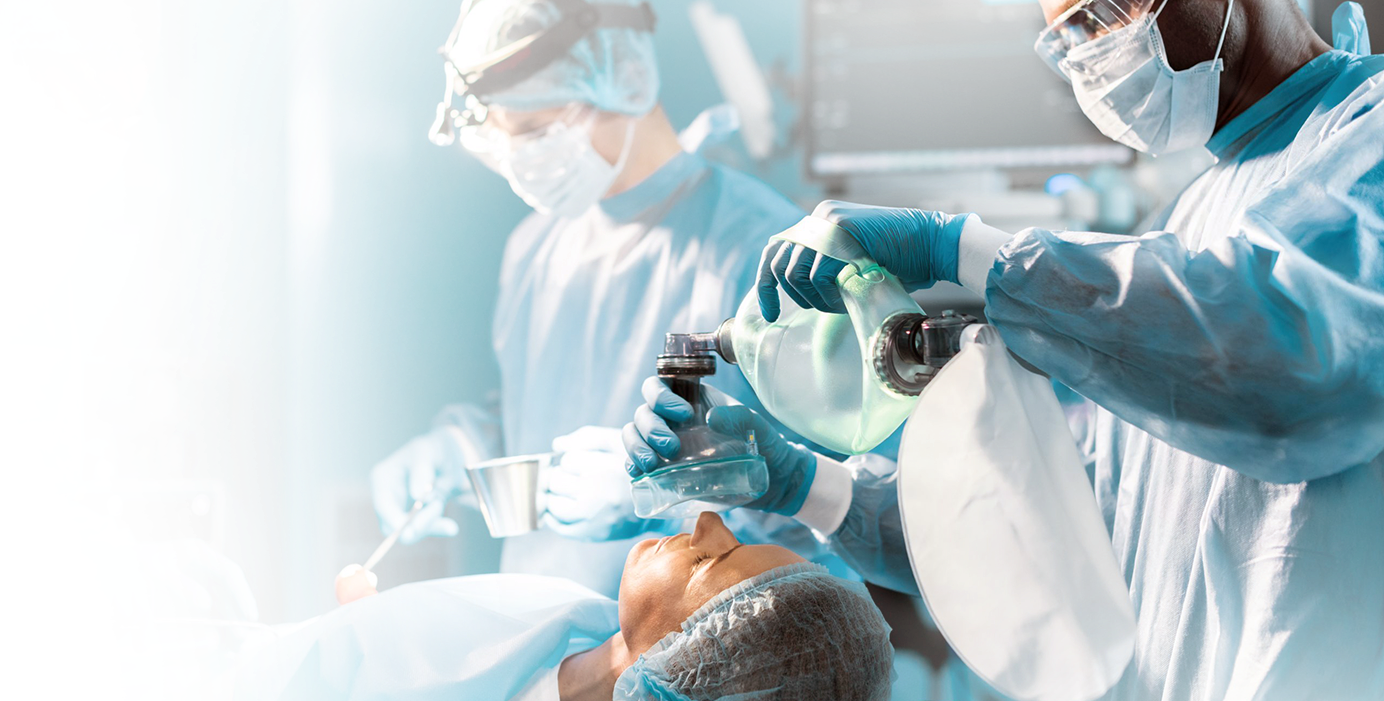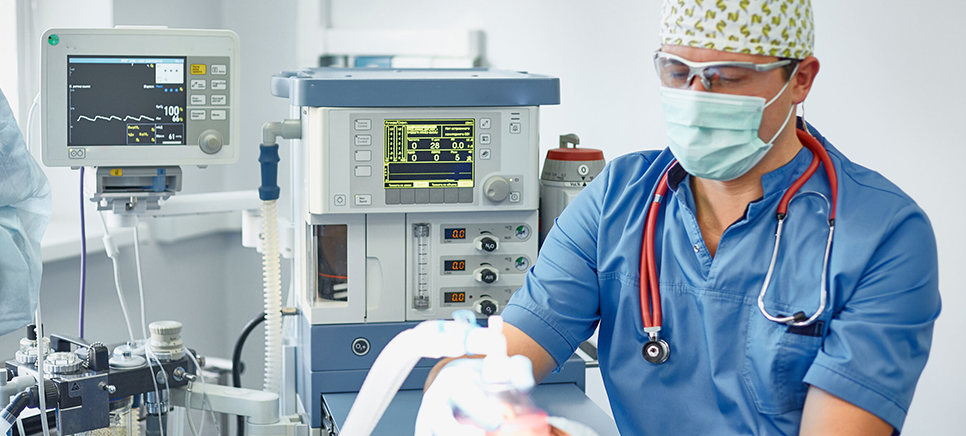Headaches can cause debilitating pain, preventing you from thoroughly enjoying life. Advances in treatment provide hope for a better way forward. We offer groundbreaking migraine and headache treatment options that deliver lasting pain relief.
From specialized techniques to state-of-the-art nerve decompression surgery, our treatments focus on one thing: improving the lives of our patients.

Headaches & Migraines Tests & Procedures

Headache Tests & Procedures
Diagnosing Headaches
Headaches can occur for many different reasons. Understanding why they happen helps guide our treatment plan. Diagnostic tests allow us to explore the underlying cause of your pain. We're proud to offer advanced diagnostic testing to learn more about your condition.
Tests may include the following:
- MRI: Nerve injury or compression in the cervical spine is a common cause of headaches. An MRI can help us identify inflammation or damage.
- CT scans: We may order a CT scan to rule out more serious causes of headaches, such as a tumor or fluid buildup.
- Blood tests and urinalysis: We like to get a complete picture of your health to understand your condition. A blood test and urinalysis can provide insight.
A diagnosis often comes after ruling out other potential causes. No matter what is causing your headaches, we will find a treatment plan to help improve your quality of life.
Migraine and Occipital Neuralgia Treatment
Patients who suffer from chronic head and facial pain usually experience a complex set of symptoms. They often consult with numerous types of doctors in their search for relief. Our underlying philosophy is that headaches are complicated, and so is their management. While surgery may be a great answer for many, it may not be for others. We therefore work in a multidisciplinary manner with primary care doctors, neurologists, pain management, and other physicians and healthcare providers to provide the best and most advanced level of care to our patients.
We are proud to be on the cutting edge of migraine and occipital neuralgia treatment with advanced procedures that provide lasting relief. Our treatment options for migraines and occipital neuralgia fall into four main categories: medication, lifestyle changes, non-invasive techniques such as Botox® injections, and nerve decompression surgery.
Medication and Lifestyle Changes:
Medication is a common choice both for treating symptoms of migraines and headaches, such as pain or nausea/vomiting, and for preventing their occurrence. Although medication can work well for many patients, it is often less effective over time. In addition, some patients may find that the side effects of medication outweigh the benefits.
Lifestyle modifications can make a difference for some migraine and headache patients.
Keeping a log of your symptoms can help you understand your triggers. Changes that may help with headaches and migraines include:
- Dietary adjustments (e.g., eliminating food-related headache triggers)
- Herbs or supplements
- Stress management
Botox® Injections:
Since 2005, we have used Botox® to treat patients with TMJ, occipital neuralgia, or migraines — making us one of the earliest adopters of this breakthrough treatment. Botox® can provide life-changing relief for chronic migraine sufferers who have headaches 15 or more days per month, each lasting four or more hours.
How do Botox® injections help with migraines?
Botox® blocks receptors that control muscle contraction, thus relaxing or paralyzing muscles. It is theorized that in regions of certain migraine “trigger points,” nerves are compressed or irritated by excessive muscle contraction. For example, Botox® helps with TMJ-related migraines by relaxing overactive jaw muscles, which reduces tension and pressure that can trigger pain.
These irritated nerves release inflammatory chemicals into the blood vessels of the head and neck that may contribute to chronic migraine headaches. By relaxing the muscles in one or more areas of nerve compression, the source of nerve irritation is alleviated, and the resulting migraine will be reduced or eliminated.
What is the procedure like?
The FDA-approved approach to migraine treatment involves administering injections around the head and neck at intervals of about 12 weeks. With Botox® for migraines, you can reasonably expect fewer, less severe migraine headaches for up to three months, with rarely any side effects.
It is important to note that the FDA says Botox® does not appear to be useful in treating or preventing less frequent migraines (migraines that occur 14 days or fewer per month) or other forms of headache.
What is the expected outcome?
Although Botox® injections must be repeated at regular intervals, many patients have reported a greater than 50 percent reduction in the frequency and intensity of their migraine headaches. Some patients have even noted a complete elimination of migraine headaches altogether.
Certain types of migraines and headache conditions respond to Botox® better than others. Only a physician experienced in treating migraines with Botox® will be able to determine if someone is a candidate for this type of treatment.
Unfortunately, not everyone benefits from Botox®. Migraine sufferers are composed of a very diverse group of patients, and due to the complexity of the condition, we sometimes see patients who do not experience any effect from injection therapy.
Nerve Decompression Surgery:
Also known as “Trigger Point Deactivation Surgery,” this revolutionary procedure is only offered at a limited number of locations in the United States. It is intended as a potentially permanent solution for patients suffering from chronic migraines or occipital neuralgia and who may have benefited from Botox® injections.
Since the early 2000s, the nerve decompression surgeons at The Institute for Advanced Reconstruction have seen tremendous success in treating patients with this procedure for both migraines and occipital neuralgia.
How does nerve decompression surgery help with migraines and occipital neuralgia?
Nerve decompression surgery is a minimally-invasive procedure that targets the nerves in the head and neck region that cause or contribute to headache symptoms. The trigger point sites are “relieved” by meticulously removing muscle, fascia (tissue lining), and blood vessels from the areas in which the nerves travel.
What is the procedure like?
For the surgery, we target locations where Botox® therapy has been previously effective. The process will take between 1 to 4 hours and may involve general anesthesia. The surgery involves the tissues or blood vessels that are pressing on, constricting, or irritating the nerves that are causing your pain. It is generally performed on an outpatient basis.
What is the expected outcome?
Some of our patients have essentially been “cured” of their condition following nerve decompression surgery. This means they no longer need medical therapy and rarely, if ever, have a headache.
If you're struggling with chronic migraines, supraorbital neuralgia, temporal neuralgia, or occipital neuralgia and have not found relief with conventional treatments, surgery may offer a promising solution. Our clinic specializes in surgical interventions designed to target the underlying causes of your headaches and improve your overall well-being.
Next Steps

